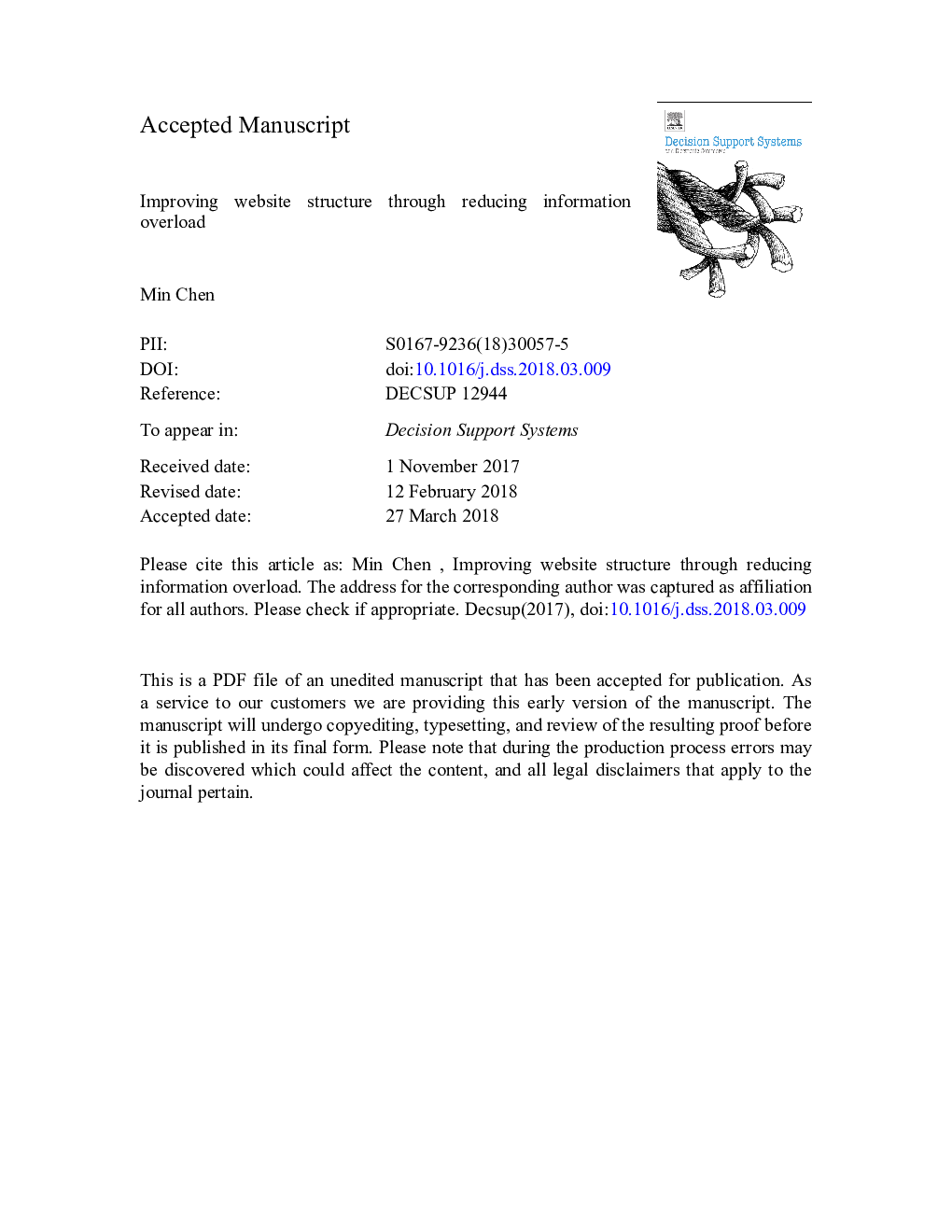| Article ID | Journal | Published Year | Pages | File Type |
|---|---|---|---|---|
| 6948352 | Decision Support Systems | 2018 | 40 Pages |
Abstract
It is well known that website success relies heavily on its usability. Previous studies find that website usability depends greatly upon its visual complexity which has significant effects on users' psychological perception and cognitive load. In this study, we use a page's outdegree as one measurement for its visual complexity. In general, outdegrees should be kept not too high in page design as large outdegrees are often signs of high page complexity which can adversely affect user navigation. This is particularly desirable and critical for maintaining website structures, because as a website evolves over time, the need for information also changes. Website structures must be updated periodically to align with users' information needs. In this process, obsolete links should be removed to avoid clustering of links that could cause information overload to users. However, the need to slim down website structures is understudied in the literature. In this paper, we propose a mathematical programming model that reduces information load by removing links from highly clustered pages while minimizing the impact to users. Results from tests on a real dataset indicate that the model not only significantly reduces page complexity with little impact on user navigation, but also can be solved effectively. The model is also tested on large synthetic datasets to demonstrate its remarkable scalability.
Related Topics
Physical Sciences and Engineering
Computer Science
Information Systems
Authors
Min Chen,
